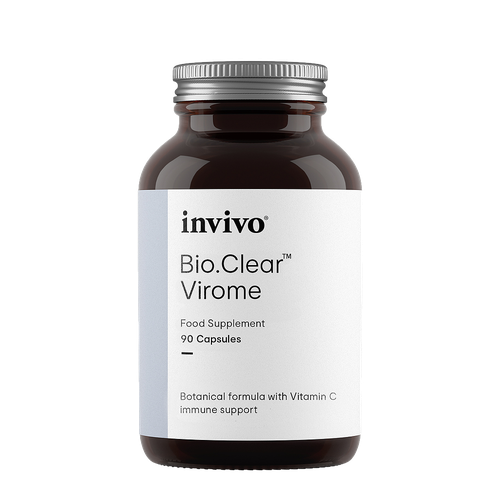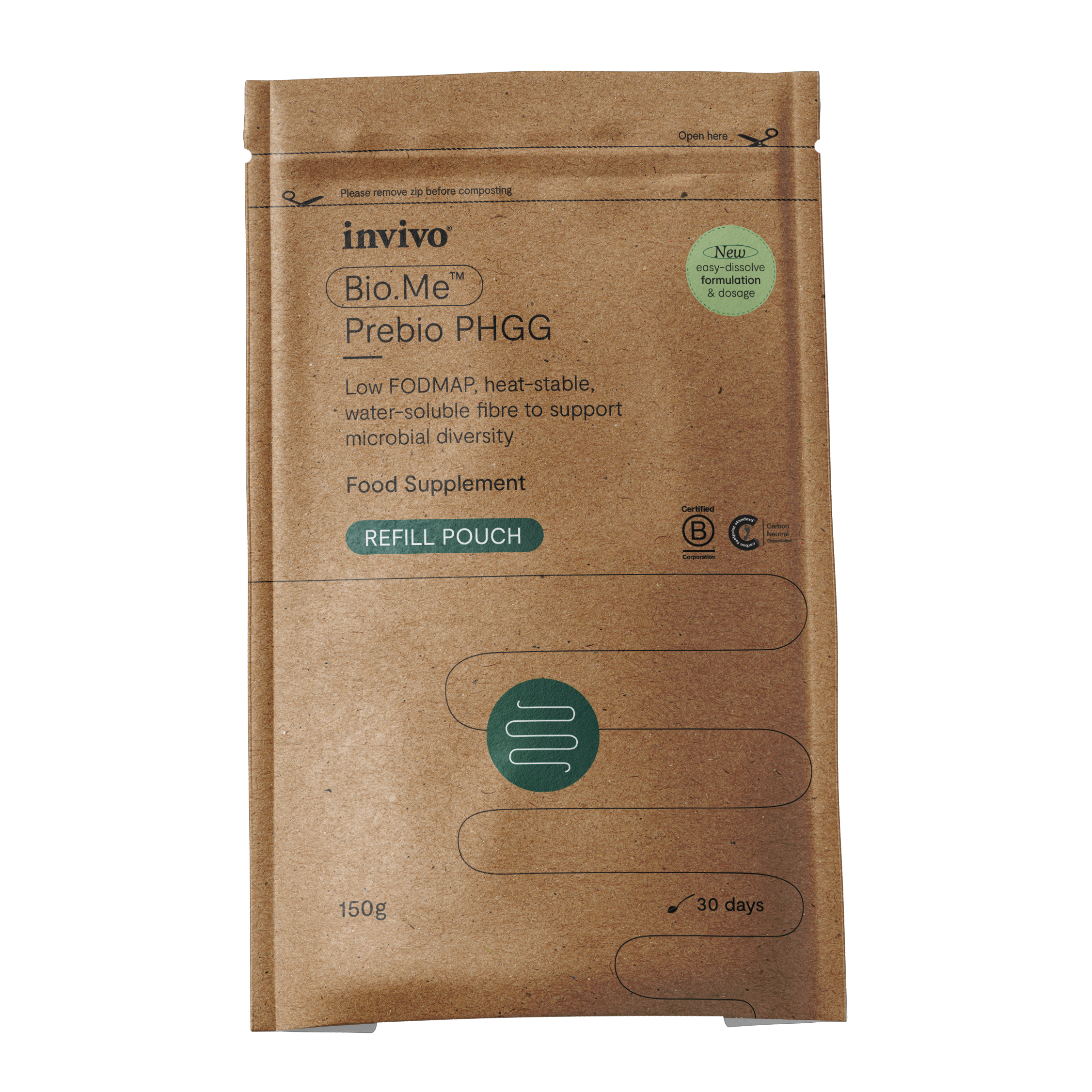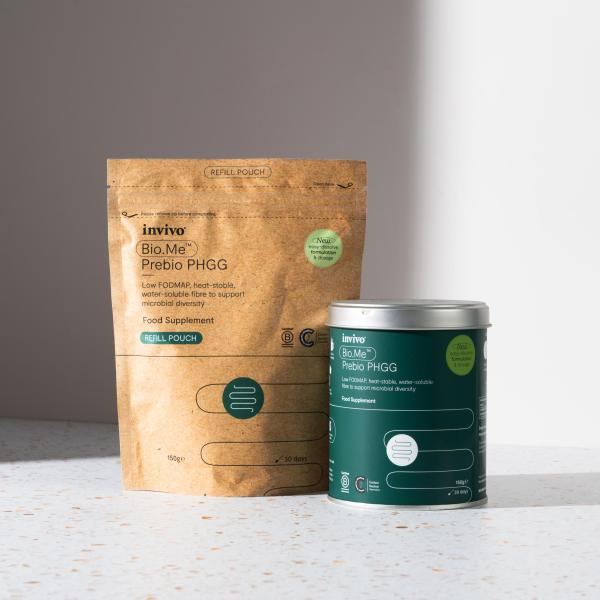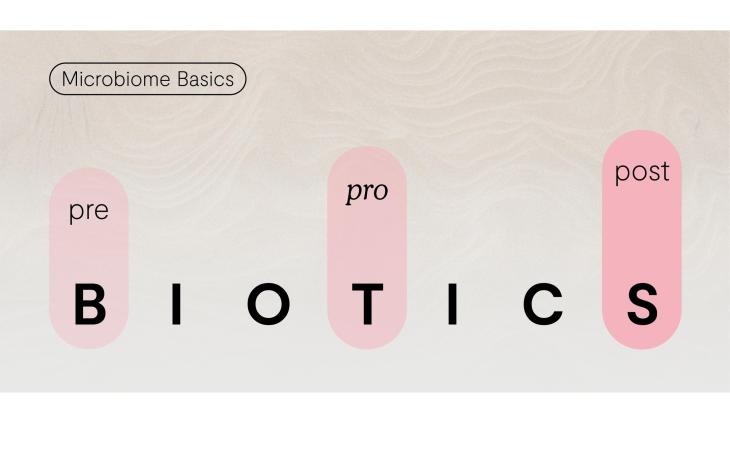Think of a sourdough starter…
You add flour – rich in nutrients and wild probiotics – and water into a jar. After several days of feeding your starter, the mixture starts to bubble and soar.
What’s happening? The flour provides fuel for the wild probiotics, which they then ferment. The probiotics produce important acids as a by-product of this process, such as lactic acid. These acids create an environment in the jar which enables a diverse, balanced colony of microbes to thrive, often for decades if nurtured!
Prebiotics are the ‘flour’, the food or fuel for the probiotics.
Probiotics are the living microbes in the jar which are carrying out fermentation.
Postbiotics are the handy by-products of probiotic activity which make the starter go sour and help to keep it alive.
Prebiotics – the ‘fuel’
Prebiotics are the fuel for specific health-promoting microbes living in the colon, including Lactobacillus, Akkermansia, and Bifidobacterium. They enable a healthy, diverse colony of microbes to thrive there, which in turn benefits our health.¹
What are the benefits of prebiotics?
A diverse intake of prebiotics helps us to have a diverse colony of microbes living in the gut which benefits our health. It is now widely recognised through hundreds of research papers that the more diverse the gut microbiome – the greater the variety of species living there – the better it is for the health of the gut and in turn, the health of the whole body.
The inverse is also true – the lower the diversity of the gut microbiome, the worse it is for the gut and the health of the body overall, with links to many different conditions, including rheumatoid arthritis (RA), diabetes, inflammatory bowel disease (IBD), and mental health disorders.²
Every microbe performs its own unique and special function/task. So, the more diverse the bacteria in your gut, the more beneficial functions/tasks can be carried out. Increasing our intake of prebiotics can have many benefits, including helping to keep our bowels regular and resilient to infection and our immune system strong and balanced.³
Where can we find prebiotics?
Carbohydrate sources of prebiotics include dietary soluble fibres such as galactooligosaccharides and inulin from:
- Pulses and legumes
- Wholegrains (e.g. rye, millet, wheat, oats)
- Cooked and cooled potato
- Onions
- Leeks
- Garlic
- Banana
- Chicory
- Asparagus
- Pistachio
- Cashew
- Jerusalem artichokes
Non-carbohydrate sources include nutrients found in the coloured pigments in plants, such as polyphenols and flavanols from:
- Berries e.g. cranberry, aronia berry, blueberry
- Red grapes
- Tea e.g green, oolong Coffee
- Cacao
- Pomegranate
Many types of prebiotics can also be supplemented when you are looking to improve a particular health issue, such as constipation or low immunity, or are just keen to give your gut some extra TLC. These include:
- Partially hydrolysed guar gum (PHGG)
- Galactooligosaccharides (GOS)
- Fructooligosaccharides (FOS)
- Inulin
- Lactulose
- Acacia fibre
- Colostrum
PHGG, for example, is well-evidenced for its ability to help regulate bowel motility when there is constipation⁴ and diarrhoea,⁵. At the same time, GOS may support mineral absorption, anxiety, and sleep quality as well as irritable bowel syndrome (IBS).
Probiotics – the ‘live microbiome’
Probiotics are the live microbes (e.g. bacteria, yeast) which can benefit our health when consumed in a good amount.⁶
What are the benefits of probiotics?
Probiotics are living organisms which we can consume through diet, from the environment, and supplements. Each probiotic is a team-player which can perform its own unique and special function/task. An increased probiotic intake essentially adds more ‘team-players’ into a microbiome site in the body, such as the one in the gut or vagina.
These probiotic team-players help to make different microbiome sites more resilient to infections by reducing the space and nutrients available for pathogens which then inhibits their proliferation, producing beneficial acids (e.g. lactic acid) and other anti-microbial substances. They also act on and improve the structure and function of our body, such as the health of the gut wall, and our immunity, blood sugar balance, and mood.
Where can we find probiotics?
Microbial colonies have been used for thousands of years to produce foods through the process of fermentation.⁷ Food packed with different probiotic species include:
- Fermented dairy e.g. kefir, aged cheese
- Kombucha
- Sauerkraut
- Kimchi
- Kefir
- Miso
- Sourdough
- Tempeh
You can also increase your intake of probiotics through supplements, and there are lots of options to choose from. When deciding which probiotic supplement to take, choose one providing specific strains of probiotic bacteria shown to have specific health benefits when consumed in a specific dose. But, what do we mean by ‘strain’?
Take the probiotic Lactobacillus plantarum Rosell-1012:
Lactobacillus is the genus
Plantarum is the species
Rosell-1012 is the strain
Specific strains of probiotics have specific modes of action, with some particularly good at supporting constipation, antibiotic-associated diarrhoea, mood, gut inflammation, vaginal thrush, urinary tract infections, and immunity, for example. Therefore, it is optimal to choose to supplement with the strain(s) which are most evidence-based for the symptom or condition in which you are looking for improvement.
Postbiotics – the ‘probiotic afterlife’
The term ‘postbiotic’ literally means after-life. This term recognises that the substances produced by probiotics, such as short-chain fatty acids (SCFAs), and even dead probiotic bacteria, can benefit our health.¹⁰ Probiotics are the gift which keeps giving!
What are the benefits of postbiotics?
The best-understood health benefit of postbiotics is from the action of short-chain fatty acids. Remember the sourness of a sourdough starter. This is coming from acids, such as lactic and acetic acid, which are produced by the microbes living with that starter. This acidity staves off unwanted microbes and maintains a healthy colony.
The production of short-chain fatty acids by microbes in the gut and vagina, for example, supports the health of these different parts of the body. For example, butyric acid production in the gut can support a healthy gut wall and even mood, while lactic acid production in the vagina can reduce the risk of thrush.
Where can we find postbiotics?
To benefit from postbiotics through diet, we need to:
- Feed the microbes which produce them with a diet rich in prebiotics
- Increase our intake of fermented foods which are packed with probiotics and, therefore, their handy postbiotic by-products
Various types of prebiotic supplementation can help grow the colony of microbes which produce health-promoting short-chain fatty acids. For example, PHGG supplementation can improve the colony of butyrate-producing microbes in the large intestine.¹¹
You can also supplement with short-chain fatty acids, such as butyrate, directly if needed.
A biotic shopping list
- Aim for a diverse, colourful weekly plant intake with up to 30 different types of plant per week, if not higher.¹² This may sound like a lot but this ideal quota includes any plant, including fruits and vegetables as well as herbs, spices, and grains. Different gut microbes prefer different types of fuel (just like humans) so you need to feed them a wide variety of prebiotic-rich foods.
- Aim to enjoy at least 1x serving daily of fermented food and some time outside in nature to increase your ingestion of probiotics. A promising small-scale study from 2021 demonstrated that an increased daily intake of fermented foods increased gut microbial diversity and reduced inflammatory markers within the body!¹³
- Aim to enjoy several servings per day of some combination of the prebiotic- and probiotic-rich foods mentioned above.




